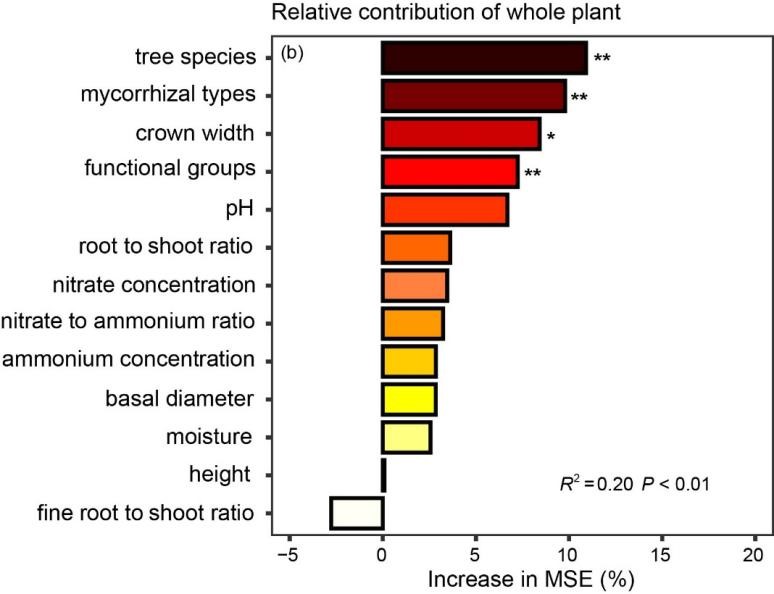
A new study published in Journal of Plant Ecology has found that temperate forest tree species, regardless of their root symbiosis with either ectomycorrhizal (ECM) or arbuscular mycorrhizal (AM) fungi, consistently prefer absorbing nitrate (NO₃⁻) over ammonium (NH₄⁺). The findings challenge longstanding assumptions about nitrogen uptake strategies among different tree functional groups and offer new insights into how plant–fungus interactions shape nutrient cycling in forest ecosystems.
Led by Dr. FANG Yunting from the Institute of Applied Ecology of the Chinese Academy of Sciences, researchers conducted an extensive field experiment in northeastern China using a novel approach known as the paired-¹⁵N labelling technique. This method involves injecting isotopically labelled ammonium nitrate (NH₄NO₃) into the rhizosphere—the soil zone surrounding plant roots—and tracing the rate and proportion of ¹⁵N uptake by the plants. The approach enables precise measurement of a plant's nitrogen source preference under natural conditions.
The experiment, conducted at the Qingyuan Forest Ecosystem National Observation and Research Station, included seedlings from 10 temperate tree species—six broadleaved and four coniferous. These were grouped based on their root mycorrhizal associations: AM-associated broadleaved trees, ECM-associated broadleaved trees, and ECM-associated conifers.
Results showed that all 10 species took up more nitrate (NO₃⁻) than ammonium (NH₄⁺), with nitrate accounting for between 49% and 83% (average 69%) of total nitrogen absorbed. Among the groups, AM-associated broadleaved species demonstrated the strongest nitrate preference (average 79%), followed by ECM-associated broadleaved species (70%) and ECM-associated conifers (60%).
The researchers employed a random forest model—an advanced machine learning algorithm used for variable selection—to identify the primary drivers of this variation. They found that mycorrhizal type, plant functional group, and the ratio of fine root mass to above-ground biomass (fine root-to-shoot ratio) were the most influential factors determining nitrate uptake patterns.
Nitrogen, a fundamental nutrient for plant development, exists in forest soils primarily as ammonium and nitrate. The form that plants preferentially absorb influences species competition, forest productivity, and carbon storage capacity. The study’s results suggest that AM-associated trees may be better adapted to nitrate-rich soils, a factor that could be critical when designing reforestation or afforestation programs under changing environmental conditions.
The study underscores the complex interplay between root symbioses and nutrient acquisition, highlighting the potential for further application of the paired-¹⁵N labelling method in ecological studies. By deepening understanding of species-specific nutrient preferences, it provides valuable evidence for forest management and biodiversity conservation under changing environmental conditions.

Key factors influencing the nitrate uptake rate (%) in the seedlings of 10 tree species (Image by QU Yuying)

86-10-68597521 (day)
86-10-68597289 (night)

52 Sanlihe Rd., Xicheng District,
Beijing, China (100864)

